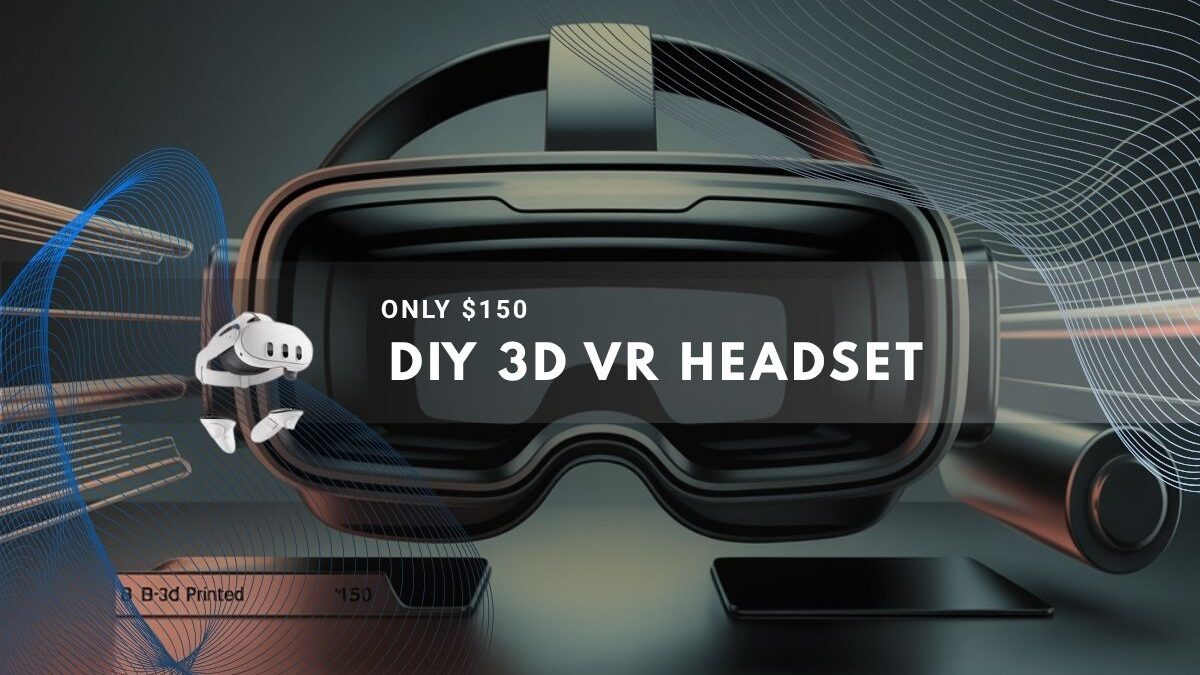This guide describes how to 3D-print and assemble an open-source VR headset with a combined 2880 × 1440 pixel display, basic orientation tracking, and comfort features—using parts that total under $150.
Key Specifications 3D-Printed VR
- Combined resolution: 2880 × 1440 pixels (2× 1440 × 1440 panels)[1][2]
- Refresh rate: approximately 60 Hz at full resolution[3][1]
- Tracking: 3 degrees of freedom (pitch, yaw, roll via MPU-9250 IMU)[4][5]
- Optics: 34 mm Fresnel lenses, 45 mm focal length[2][6]
- IPD range: 58–72 mm with sliding mounts[1]
- Comfort: compatible with HTC Vive Pro face pads[1]
- Open-source: STL files, firmware, parts list on GitHub[2][1]
Components and Sources
| Component | Source | Citation |
|---|---|---|
| 2.9″ 1440 × 1440 LCD panels | AliExpress listings for MIPI/DP driver modules | [7][8] |
| Fresnel lenses (34 mm/45 mm) | Generic OEM on AliExpress | [9] |
| MPU-9250 9-axis IMU module | GY-9250 breakout board | [4][10] |
| Arduino Pro Micro | SparkFun or AliExpress | [11][12] |
| M3 hardware | Standard M3-0.5 mm screws and nuts | [13][14] |
| Filament (PLA/PETG) | Any 1.75 mm spool; ~200 g | [1][2] |
3D Printing
- Clone the repository:
git clone https://github.com/dmcke5/DIY_VR.git.[1] - Print with PLA or PETG, 0.2 mm layer height, 20% infill.
- Enable supports for lens holders and IPD slider overhangs.
Electronics Assembly
- Secure each LCD panel in its printed retainer.
- Attach lenses in the printed holders.
- Wire display driver boards to HDMI or USB-C ports per manufacturer instructions.[15]
- Connect MPU-9250 to Arduino Pro Micro via I²C (SDA/SCL), power at 3.3 V.[16][4]
- Mount electronics inside the chassis and route cables through built-in channels.
Software Setup
- Install Arduino IDE and add FastIMU library.[17]
- Upload example sketch for MPU-9250 orientation data to Arduino Pro Micro.
- Install Relativity VR SteamVR driver and configure for a 3 DoF headset.[18][17]
- In SteamVR settings, select the DIY headset display and adjust IPD and focus.
Performance and Limitations
- At 2880 × 1440 pixels, the displays drop to ~60 Hz, causing occasional stutter.[3][1]
- Tracking is orientation-only; no positional (translational) tracking.[5][17]
- Fresnel lenses produce some glare and “god-rays”; pancake lenses may reduce artifacts.[19]
Comparison with Commercial Headsets
| Feature | DIY VR Headset | Meta Quest 3 | HTC Vive Pro |
|---|---|---|---|
| Resolution (combined) | 2880 × 1440 | 3664 × 1920 | 4320 × 2160 |
| Refresh rate | ~60 Hz | 90 Hz / 120 Hz (boost) | 90 Hz |
| Tracking | 3 DoF (IMU) | 6 DoF inside-out | 6 DoF base stations |
| Price | <$150 | $300–$350 | $800–$900 |
| Face pads | Vive Pro compatible | Integrated | Integrated |
| Open source | Yes | No | No |
Open-Source Resources
- GitHub repository: github.com/dmcke5/DIY_VR[1]
- YouTube build video: “I built my own VR for under $150!”[11]
